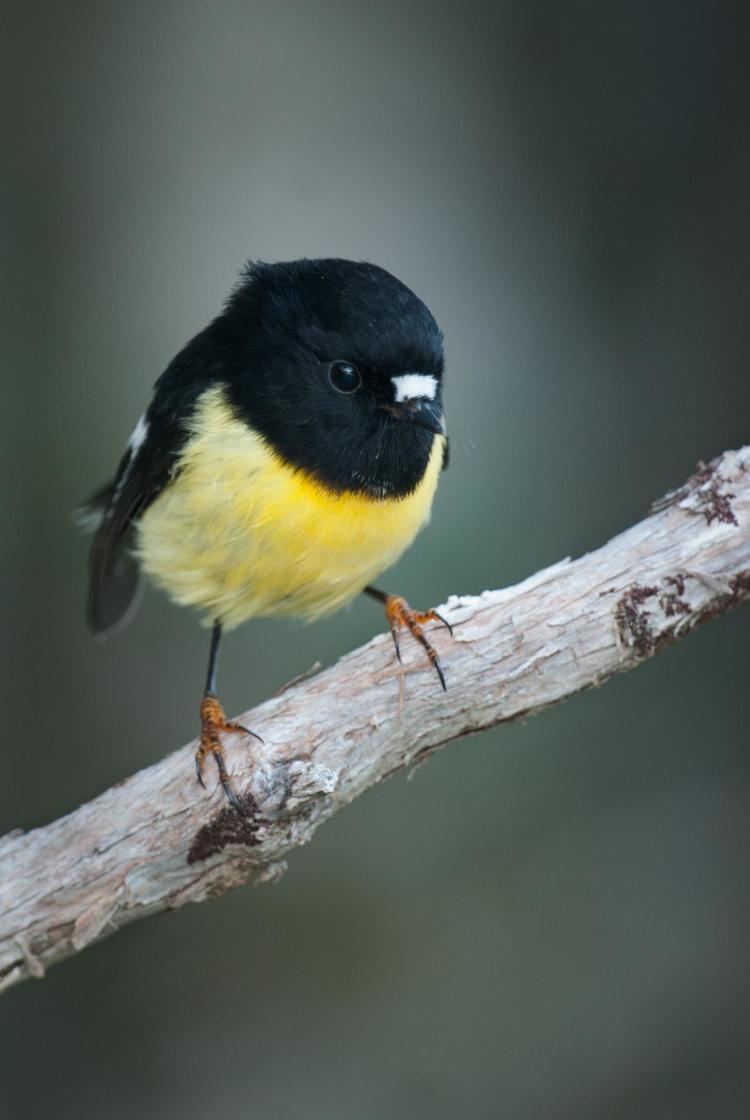Order Passeriformes | Phylum Chordata Family Petroicidae Scientific name Petroica macrocephala Rank Species | |
 | ||
Similar Bird, South Island robin, Petroica, New Zealand bellbird, Tui | ||
New zealand tomtit
The tomtit (Petroica macrocephala) is a small passerine bird in the family Petroicidae, the Australian robins. It is endemic to the islands of New Zealand, ranging across the main islands as well as several of the outlying islands. It has several other English names as well. There are several sub-species showing considerable variation in plumage and size. The species is not threatened and has adapted to the changes made to New Zealand's biodiversity.
Contents
- New zealand tomtit
- Life in ukraine feeding cute tomtit bird by hand
- Etymology
- Taxonomy and evolution
- Description
- Behaviour
- References
Life in ukraine feeding cute tomtit bird by hand
Etymology
The term tomtit was originally a shortened form of tom titmouse. Either form has been used to describe a number of small birds, but in England tomtit was most commonly used as an alternate name of the Blue tit. The word tit is today used for a number of small birds, especially of the family Paridae. Originally, it was used for any small animal or object.
Taxonomy and evolution
The tomtit is one of four species of the genus Petroica found in New Zealand, the ancestors of which having colonised from Australia. The species was once thought to have been descended from the scarlet robin, although more recent research has questioned this. It seems likely that there were two colonisation events, with the North Island robin and the South Island robin descended from one event and the black robin and tomtit from another.
There are five species of the tomtit, each species being restricted to each of the following islands or island groups, North Island, South Island, the Snares Islands, the Chatham Islands and the Auckland Islands. Four of these five subspecies have been elevated to full species in the past (the Chatham subspecies was retained with the South Island tomtit), but genetic studies have shown that these subspecies diverged relatively recently. The Māori name of the North Island tomtit is miromiro, while the South Island tomtit is known as ngirungiru.
Description
The tomtit is a small (13 cm, 11 g) bird with a large head and a short bill. The male North Island subspecies has black head, back, wings (with a white wing bar) and a white belly. The subspecies from South Island, the Chatham Islands and Auckland Islands are similar but have a yellow band across the breast between the black head and white belly. The females are brown instead of black. The Snares Island subspecies is entirely black, and is known as the black tit.
The island subspecies of tomtits show a striking variation in body size, being considerably larger than their mainland relatives, a tendency known as the island rule. Birds from the main islands weigh around 11g, but birds from Snares Island weigh in at 20 g.
Behaviour
The tomtit is mostly an insectivore, feeding on small invertebrates such as beetles, caterpillars, spiders, moths, weta, earthworms and flies. Fruit is taken during the winter and autumn. Most subspecies feed in vegetation, waiting on a perch and watching for prey. Insects are also gleaned from branches and leaves. The Snares subspecies feeds on the ground as well, in a similar fashion to the New Zealand robin.
